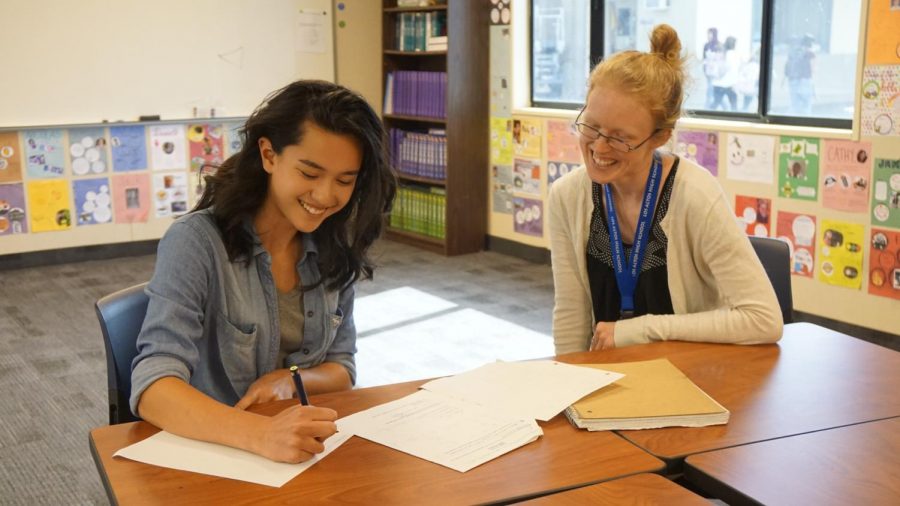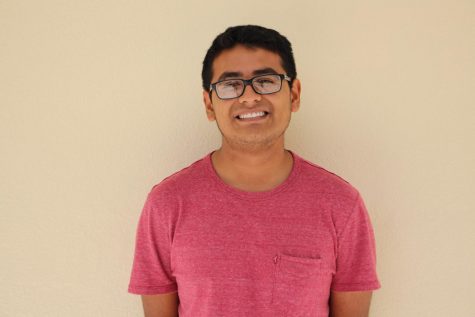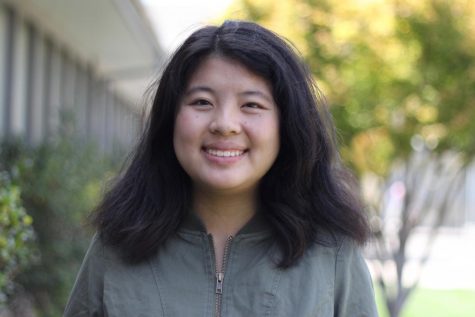Emily Macway’s path to teaching
October 24, 2017
Emily Macway would start her mornings at Los Altos and finish her nights at Santa Clara University every school day last year. Her schedule, from teaching Algebra 2 at 8 a.m. to taking classes until 10 p.m., is common for a student teacher. The experience, while tiring, taught Macway essential skills to become a full-time teacher at Los Altos.
As a student teacher under an SCU program, Macway taught Algebra 2 and Trigonometry Honors classes under the supervision of math teacher Betty Yamasaki. After those periods, she would go to Santa Clara for evening classes. Although the road to becoming a teacher was not easy, Macway dedicated time to her profession by taking math teaching method, psychology and ethics classes at SCU while aiding Yamasaki in the classroom.
“It was very exhausting at times,” Macway said. “I was here every morning, teaching three periods, and in the evenings, I would have class until 10 p.m. I was just constantly working, [but] it was those mornings that I was here that I loved the most.”
While Macway observed Yamasaki during first semester, she took on the challenge of teaching second semester. Once she took over, she found it difficult to approach students about classroom or at home concerns. She felt unsure of how to talk to students who needed help, but soon found the courage to engage with students to become a better instructor.
“I was hesitant about even approaching students with classroom management concerns, or [if] I see that they’re struggling,” Macway said. “Sometimes you just have to jump in and call them out, or just ask them… A lot of those experiences in student teaching gave me the courage to now approach students with questions and really find out what I can do to get to know them as a [person].”
Junior Braden Koch was in one of Macway’s Algebra 2 classes last year. He observed her ability to control the class increase as she gained more confidence in her interactions with students.
“Once the year progressed, you could tell she was more comfortable taking on her position as teacher,” Braden said. “She was not afraid to take control of the class [or] call out someone who was not paying attention when she might have let it slip by in the beginning of the year.”
Some of her assignments from the SCU program involved her students as well. During one of Braden’s classes, students were filmed while Macway taught, and the recordings were sent to her school. When Braden heard about her workload, he was impressed by the hard work she put in daily to become a better teacher.
“[It] was really impressive that she was taking on the initiative of teaching multiple periods, getting feedback from students, getting feedback from her [master] teacher and being a student herself,” Braden said. “By the end of the year, I thought she would be really prepared to teach, and so did the school.”
Getting comfortable with students was just one step in the process. Macway was formally evaluated by Yamasaki throughout the year, getting feedback on her interactions with special need students and her ability to manage her classes.
“How am I meeting the needs of students especially in special need areas, such as [English Language Learner Students]?” Macway said. “How am I changing my instruction to help people of all needs? A lot of the feedback I got was that because I was younger, I was more relatable, which was good for the students and that I helped students to feel less stressed out.”
As a master teacher, Yamasaki worked with a SCU field supervisor to give formal evaluations and advised Macway on grading papers and lesson planning.
“The responsibility of a master teacher is to help interns find their own teaching style by being exposed to different varieties of teaching practices, management, and organization,” Yamasaki said in an email. “Ms. Macway progressed throughout the year, by gaining more confidence in her lesson delivery, teaching practices, and working with the students effectively.”
While her studies at SCU were beneficial, Macway felt that her role as a student teacher contributed the most to her growth as a teacher, as she became comfortable getting to know her students and changing her instruction on an individual basis. Teaching, she found, was a skill best learned through practice.
“While reading and studying [teaching] theory is definitely a very important aspect of being a teacher, being in the classroom and practicing it is really the best way to prepare for that job,” Macway said. “I’m grateful that I can have my first teaching job at the place where I was a student teacher.”
Macway’s first year as a full-time teacher at Los Altos has her teaching Algebra 2 Honors and Trigonometry Honors. With evaluations from administrators coming towards the end of this year, she hopes to continue learning to improve her teaching.
“I get administrators here evaluating my teaching and giving me feedback as well as student surveys,” Macway said. “We’re here because we care about education, and we’re passionate about helping people learn. I just think it’s fun to be in a community as a teacher.”





